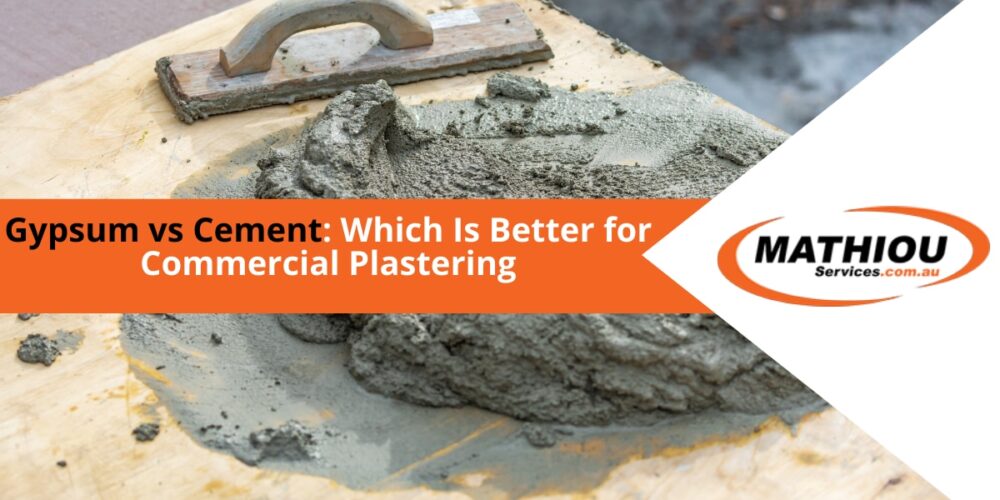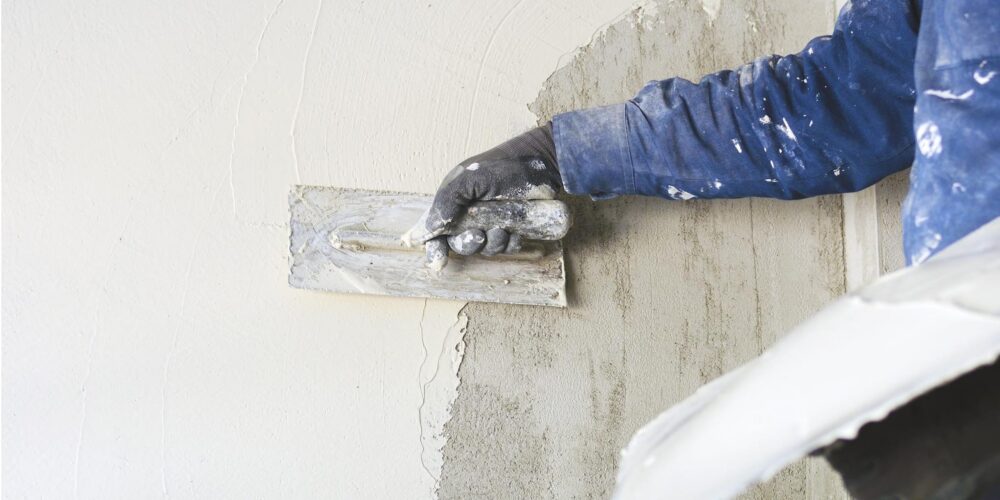When it comes to commercial plastering, gypsum and cement are the ultimate contenders, each bringing its own flair and versatility to the table. It’s a battle of wits and properties, as these materials play distinct roles in shaping the finish for your project. But which material should you use? Let us help empower you to make an informed choice that will leave your commercial space plastered with perfection. Here are some key differences and essential considerations you should explore:
Composition and Setting Time:
- Gypsum: Picture gypsum plaster as the swift chameleon of the plastering world. Composed of calcium sulphate dihydrate, this soft sulphate mineral effortlessly transforms from a powder into a solid mass through the process of hydration. More importantly, gypsum boasts a setting time of approximately 20 to 30 minutes, allowing for swift progress and efficient workflow.
- Cement: On the other hand, cement takes a more deliberate approach in its plastering performance. Crafted from a blend of limestone, clay and other minerals, it hardens through a chemical reaction called hydration. Though this reaction takes a little more time to work its magic, it results in a sturdy foundation that stands the test of time. Cement generally has a slower setting time than gypsum, ranging from a few hours to several days. But it provides ample opportunity for careful craftsmanship and meticulous attention to detail.
Strength and Durability:
- Cement: Cement is known for its strength and durability. That’s why it is often chosen for structural applications, especially where high strength and load-bearing capacity are required. If you have similar projects, you can rely on cement-based plastering materials to withstand heavy loads and deliver long-term structural integrity.
- Gypsum: While gypsum may not possess the same level of brawn as cement, it has its own niche in the plastering world. Gypsum’s strength lies in its versatility for non-structural applications. It shines as a reliable choice for interior finishes, such as wallboards, plaster and ceiling tiles, as it offers excellent aesthetic appeal and ease of installation. But, note that gypsum-based materials may not be suitable for areas prone to moisture or high impact. In such cases, alternative materials may be more appropriate to ensure long-term durability.
Fire Resistance:
- Gypsum: When it comes to fire resistance, gypsum takes the spotlight with its innate properties. It is inherently fire-resistant due to its chemical composition. In the face of high temperatures, gypsum’s secret weapon is its water molecules, which are released as steam when exposed to high temperatures, effectively creating a barrier against the spread of flames. This exceptional fire resistance makes gypsum boards a popular choice for fire-rated wall assemblies in commercial buildings, providing an added layer of safety and protection.
- Cement: Cement plaster, too, proudly boasts a high level of fire resistance. Its composition and structure contribute to its ability to withstand the intense heat of fires. But while cement-based materials generally exhibit excellent fire resistance, some specific compositions may experience a reduction in strength when exposed to extreme heat for prolonged periods. Careful consideration and consultation with professionals are necessary to ensure the chosen cement-based materials maintain their integrity and fire-resistant properties under the anticipated conditions.
Soundproofing and Insulation:
- Gypsum: Want to create acoustically pleasant environments in your commercial building? Pick gypsum. Gypsum boards and panels have good soundproofing properties, making them suitable for commercial spaces where noise control is important. With their ability to absorb and dampen sound vibrations, gypsum-based plastering products help create a quieter and more comfortable atmosphere for employees, clients and visitors. Also, gypsum possesses commendable thermal insulation properties, contributing to better temperature regulation within the building.
- Cement: While cement is valued for its strength and durability, it is not known for its soundproofing or insulation properties. You may need additional insulation materials to achieve the desired thermal and acoustic performance. Seek expert advice to strike the perfect balance between strength, durability and optimal thermal and acoustic performance when choosing plastering material for your project.
Cost and Availability:
- Gypsum: When it comes to cost-effectiveness, gypsum takes the lead, making it a favoured choice for commercial applications. They’re generally more affordable than cement-based materials, providing an economical solution for plastering needs. Plus, gypsum products are widely available, which helps ensure easy accessibility and a smooth supply chain for commercial projects.
- Cement: Cement is a widely used construction material, but its cost can vary depending on factors such as type, quality and regional availability. While cement-based materials may involve a higher upfront cost than gypsum, their long-term durability and strength often justify the investment. It is vital to consider the specific project requirements, budget constraints and regional pricing variations when determining the cost-effectiveness of cement for commercial plastering applications.
Summing it up
To sum it up, the choice between gypsum and cement for commercial plastering boils down to their respective strengths. Gypsum shines in non-structural, interior applications, offering fire resistance, soundproofing and thermal insulation benefits. On the other hand, cement takes the stage for its structural prowess, providing strength, durability and load-bearing capacity. To make the best decision, consider the specific requirements and regulations of your commercial project. Seek advice from architects, engineers or contractors like Mathiou Services to ensure the most suitable material.
Want to learn more about how we can help with your commercial business needs? Contact us today.









